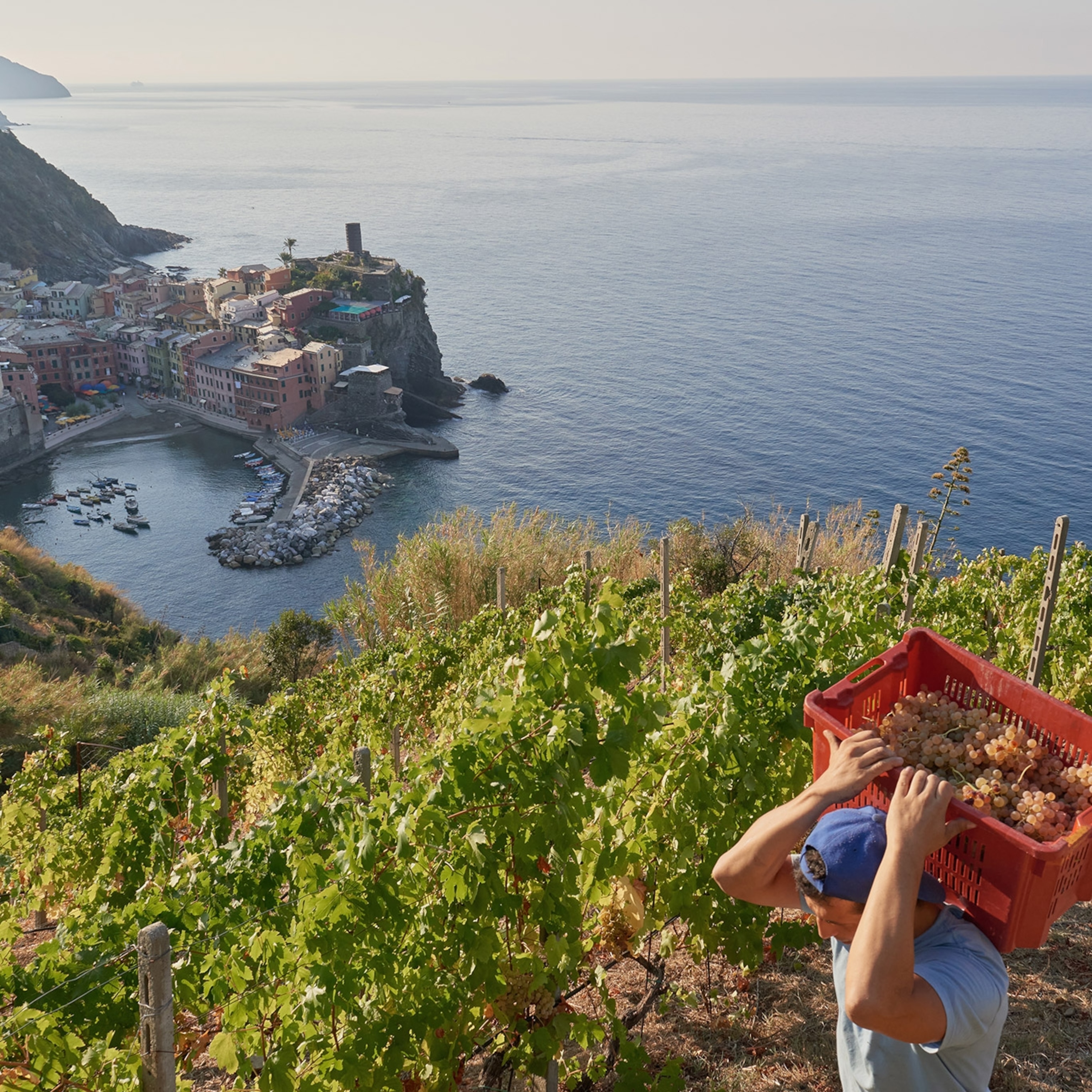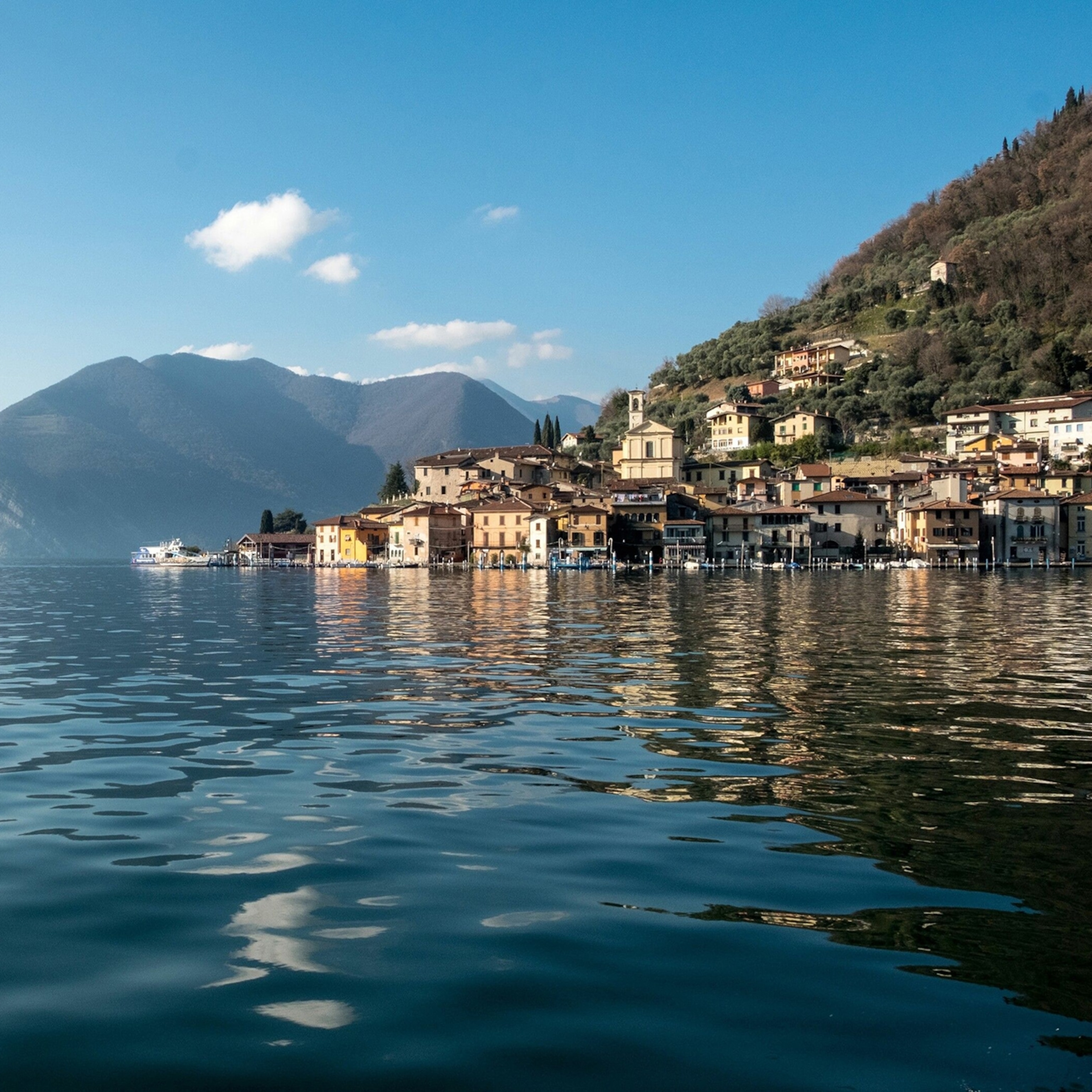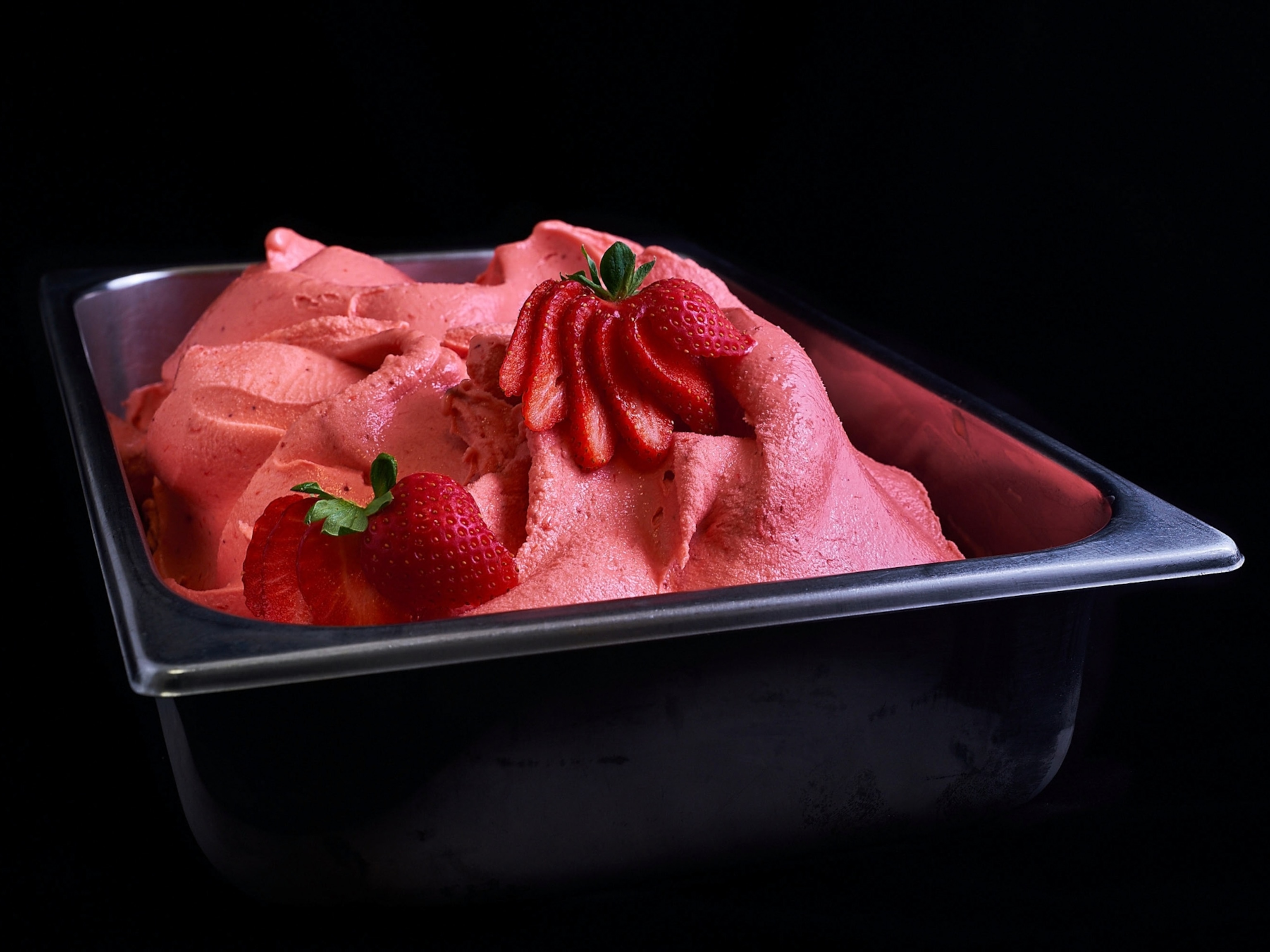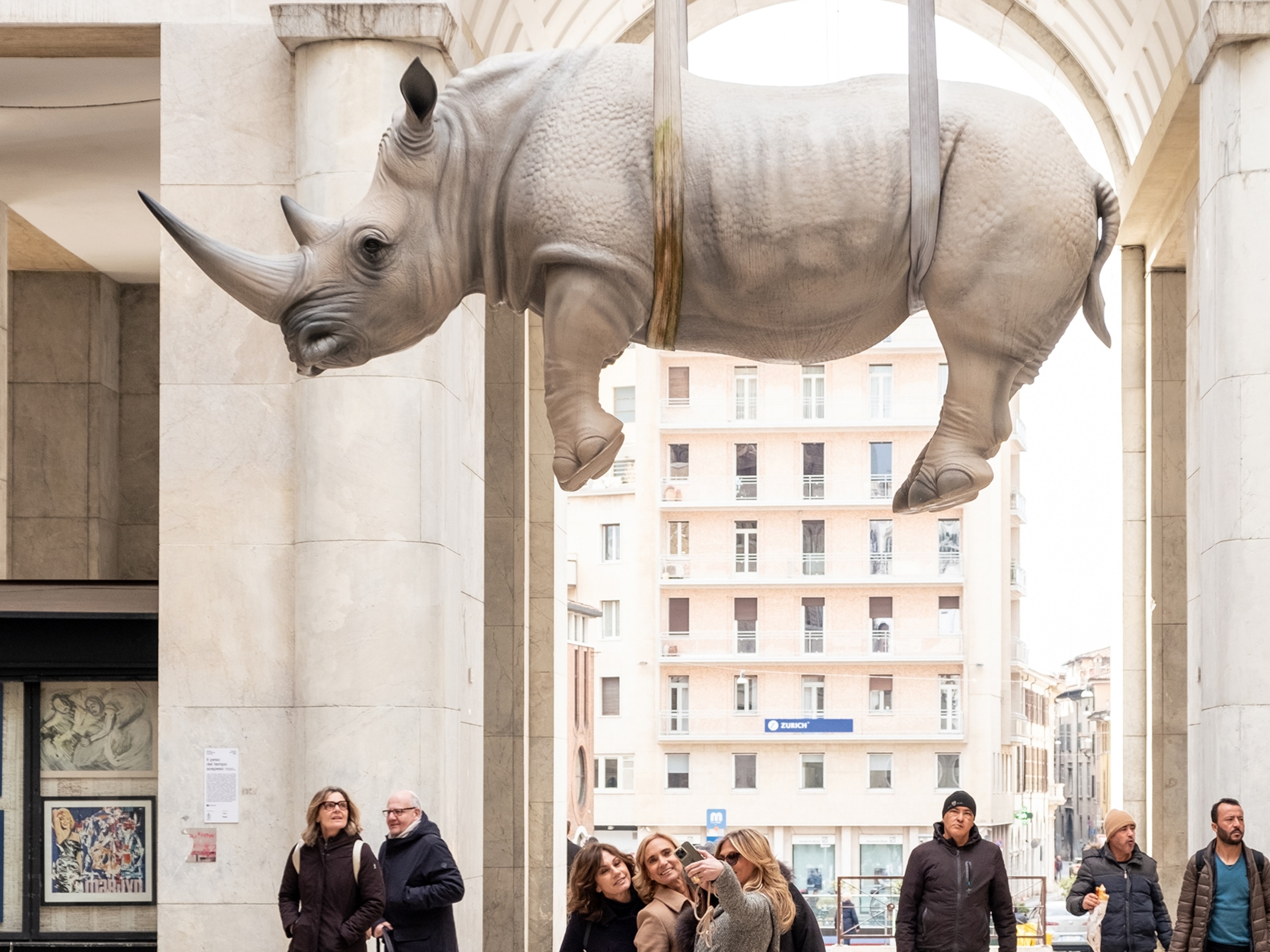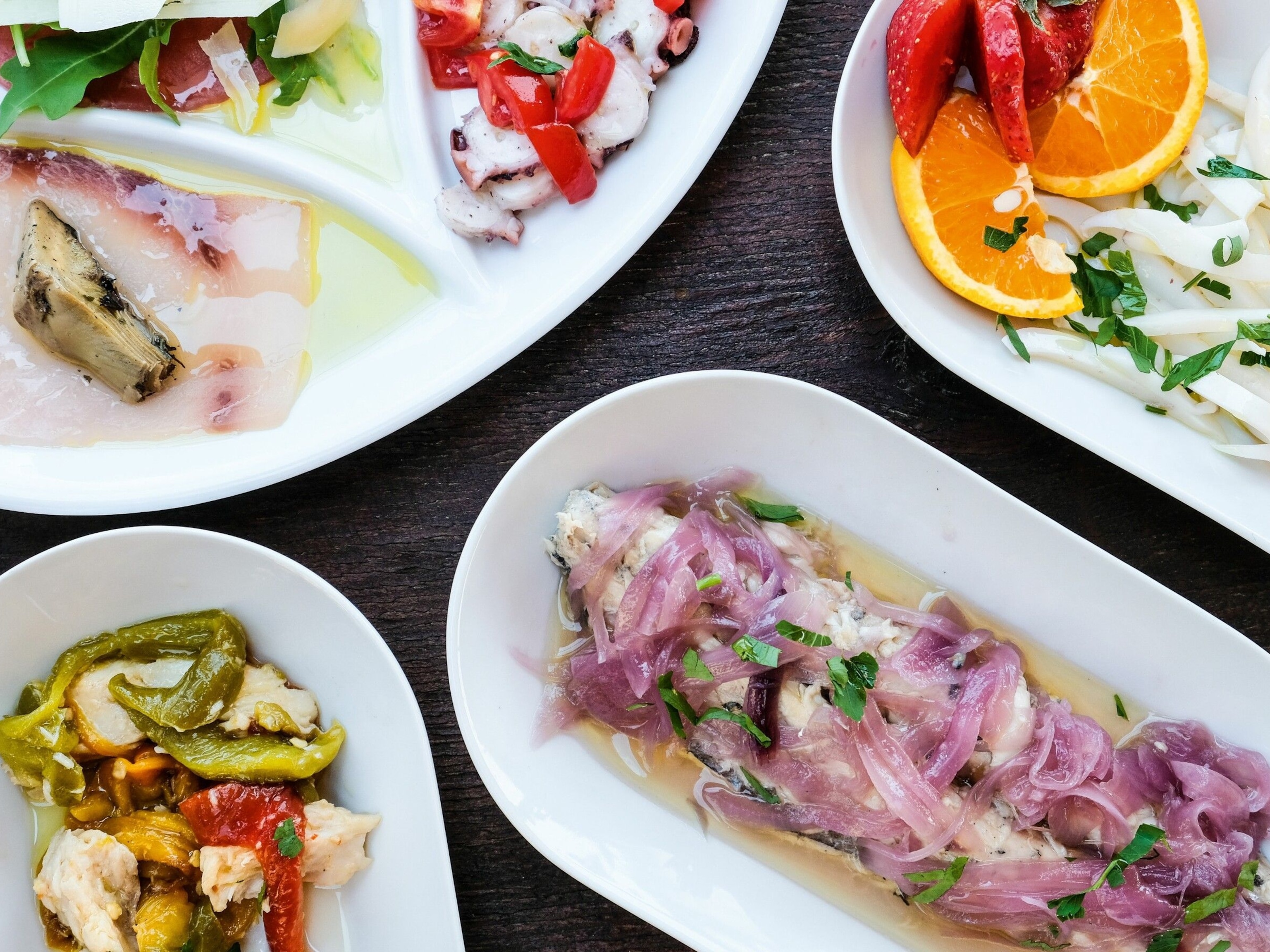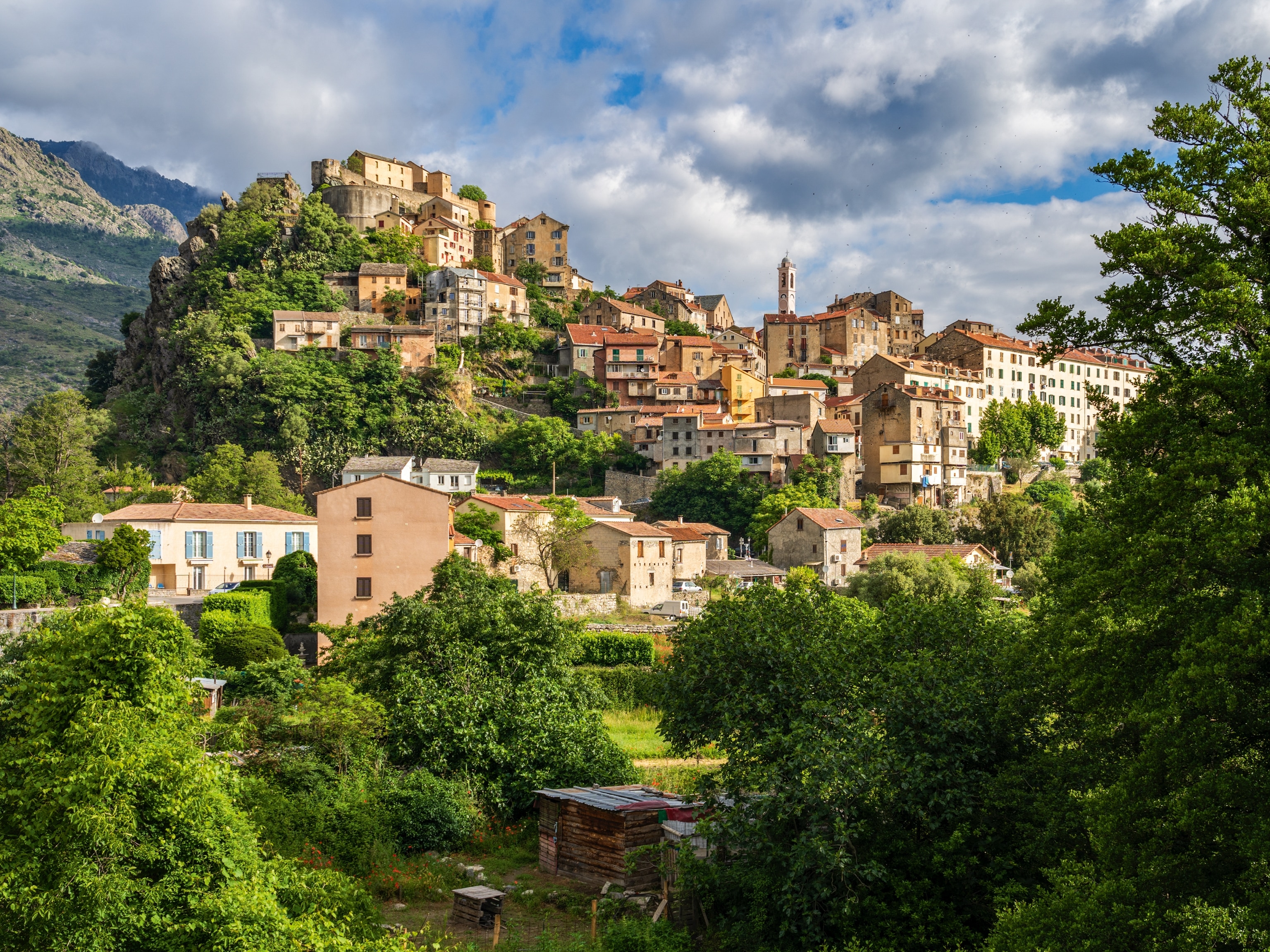These are the must-see sights of Italy's Veneto region
From Venice's famed waterways, to small towns that produce some of the world's most beloved wines and cheeses, here's how to have a sensory journey through Italy's Veneto region.
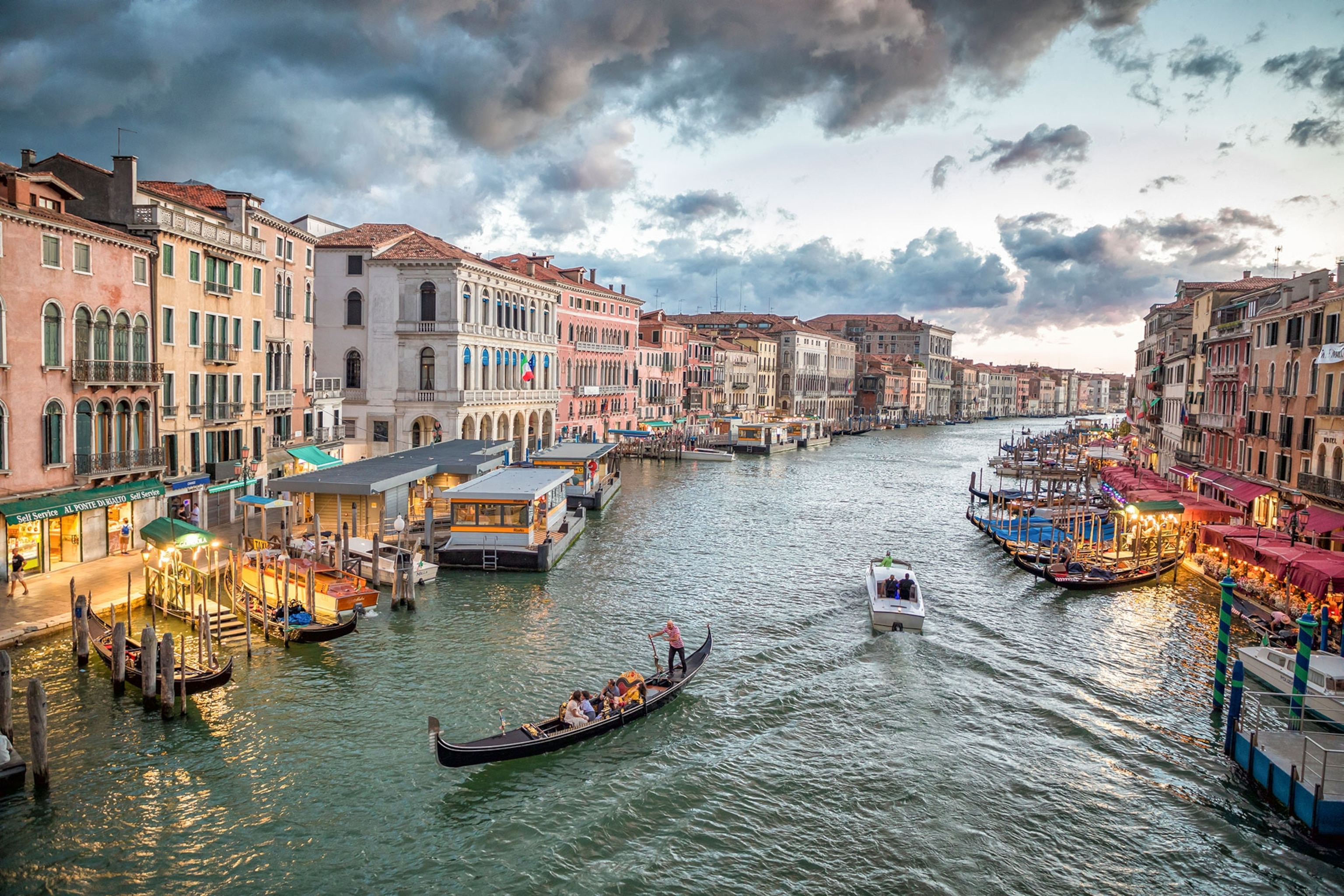
Veneto is a region of dramatic differences spread across seven provinces in northern Italy. Ninety-three miles (150 kilometers) of sandy coastline hug the Adriatic Sea, while rolling green vineyards, medieval villages, and hiking trails decorate its interior. And then there’s its most famous counterparts: the floating capital city of Venice that draws travelers around the world to traverse its canals, and Verona—home to Shakespeare’s ill-fated duo, Romeo and Juliet.
Beyond Veneto’s more well-known cities lies the plain waters and palatial villas of Lake Garda, the mountaintop saunas and ski resorts in The Dolomites, and the smaller provinces of Padua (Padova in Italian) and Treviso, where historic relics, museums, and watering holes abound. Here’s what not to miss in this vastly diverse region.
Traverse Venice’s famed waterways

Known worldwide for its intricate system of canals, Venice is often the starting point for any adventure through Veneto. Roughly 150 waterways connect the capital city to tiny neighboring islands, with the most famous being the Grand Canal. A popular way to familiarize yourself with the lagoon is aboard the city’s iconic, gleaming black gondola, but there are also easily accessible public water buses and private motorized taxis. Be sure to see the Grand Canal’s four impressive bridges, including the most famous, Rialto, which connects San Marco to San Polo.
When you’re ready to move beyond central Venice, consider taking a water taxi to nearby islands like Burano, known for its intricate lacework traditions and brightly colored homes, and Sant’Erasmo, called Venice’s vegetable garden because of its fertile, green land that produces the island’s celebrated tender violet artichoke. When you’re ready to co-captain a more in-depth experience on water, consider a tour that provides an intimate look at the lagoons and fishing life of the region.
Savor Veneto’s celebrated wines
As the largest wine-producing region in Italy, oenophiles and novices alike will have no issue discovering a bottle to enjoy in Veneto. The cherry-tinged Valpolicella and Amarone, delicate and slightly salty white Soave, and crisp sparkling Prosecco are all produced here.
Red wine lovers should head to the hills of the Valpolicella wine region, located just north of Verona and stretching to the west in Lake Garda. Some of the best Amarone in the region can be sampled at Bertani, including tours that introduce visitors to the historic estate, vineyards, and gravity-flow cellars. For Prosecco, make your way to Bisol, a family-owned winery that has been producing bubbly Superiores for 21 generations, and the Tomassi Family Estates for the saline-forward Soaves with zesty citrus flavors that are particularly refreshing on summer days.
In Verona, make a reservation at Antica Bottega del Vino for a crash course of all the region’s wines. The line out of the door is the first sign that this is a favorite for both residents and visitors alike. Don’t miss their stellar selection from the family-owned Allegrini—one of the of the leading wine producers in the region that also offers a number of tours that highlight their celebrated Valpolicella.
Sip a spritz (or two)
Italy’s ubiquitous spritz was born in Veneto, so it’s only right to commemorate its existence here with a tasting or two. Aperol was first created in Padua in 1919, and the orange-red liqueur remains a mainstay in a number of bars, called 'bàcaro', alongside ‘cicchetti’, bite-sized Italian snacks. Take a spritz crawl through Padua, stopping at favorites that include Bar Nazionale, Caffè Pedrocchi, and Bar Zanellato. Though the traditional recipe calls for three parts Prosecco, two parts of Aperol or Campari, and a splash of soda water–you’ll find a number of bartenders putting their own spin on the classic–including La Yarda, which offers over 26 variations to try.
Try a regional specialty, bigoli
When it comes to pasta in Veneto, it’s all about bigoli—a thick spaghetti made with buckwheat or whole wheat and sometimes eggs. Venice’s signature pasta, bigoli in salsa, include an anchovy sauce. The dish dates back to ancient times when Venice was a maritime republic heavily influenced by seafood’s availability. There are a number of restaurants to taste bigoli in salsa, including Trattoria Alla Madonna, located near the historic Rialto Bridge, and Osteria Al Bacco, where you might be able to snag a seat on the balcony with tiny canal view. Other traditional Venice dishes include risotto al nero di seppia (risotto cooked with cuttlefish ink) and sarde in saor (deep fried sardines preserved in a sweet and sour marinade). Instituo Venezia offers a number of cooking classes where you can learn the history and recipes of many of these dishes.
Enjoy the great outdoors in the Dolomites
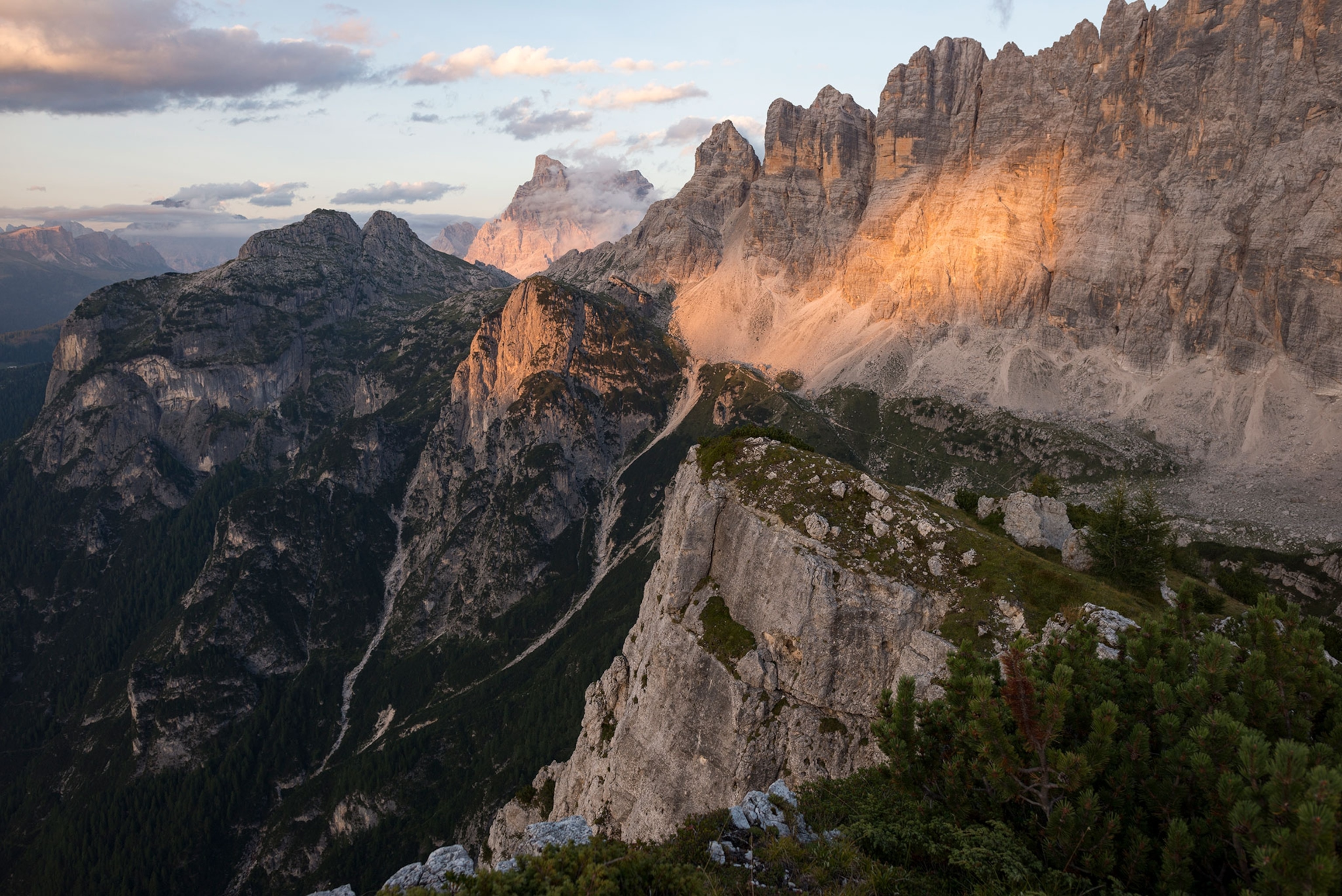
Sports enthusiasts will find no shortage of activities in this Italian Alps haven. The Dolomites’ mountain range covers some 350,000 acres that come alive every season. In the winter, snow blanked peaks make it a playground for skiers, and in the spring, hiking trails like the 5.5-mile loop to Tre Cime di Lavaredo offer forays through flower fields and panoramic views of Laverdo’s three jagged limestone peaks. Row your way across the teal-colored waters of Lago Di Braies, or cycle through the peaceful woods and lakeside trails of the 30-mile Toblach-Cortina Path.
Explore the Grotte di Catullo
Located on the northernmost tip of Lake Garda’s Sirmione peninsula, the impressive ruins of the Roman villa Grotte di Catullo were built between the end of the 1st century BC and the beginning of the 1st century AD. Just an hour outside of Verona, this is a great day trip option to explore one of the region’s archaeological wonders and onsite museum. Often frequented as a resort town, the Sirmione peninsula’s thermal spas, beaches, and central Scaligero Castle round out a full day of adventure.
Visit the birthplace of asiago cheese and beyond
Asiago has been produced in Veneto for hundreds of years in the foothills from a plateau with the same namesake as the cheese. The semi-hard cow’s milk is served pressed (fresh) or aged, and ready to be sampled at shops like the charming Caseificio Pennar Asiago and family-owned Locanda Stella Alpina, located in the nearby village of Tresche Conca.
Lake Garda is also worth a visit for its cheeses, sourced from cows grazing on the mountain pasture areas around the lake. Many local farms and dairies offer tastings where visitors can sample a variety of cheeses paired with local wines and bread, including Calvino Gusto Supremo. Monte Baldo, the highest peak on the east side of Lake Garda, produces a number of alpine cheeses like the semi soft Caciotta Latte Crudo that can be found at local shops like Malga Pralongo.
Garda is also celebrated for its high-quality olive oils, recognized by the European Union as a PDO (Protected Designation of Origin). The delicate and fruity flavors that the olive oils of the region produce are due to Lake Garda’s agreeable Mediterranean microclimate. The most widespread cultivations—Casaliva, Frantoio, and Leccino– can be sampled at mills like Frantoio Manestrini – with experiences that include olive oil tastings and a curated picnic.
Visit the tributes to Romeo & Juliet
Parting may be such sweet sorrow when you leave Verona but be sure to visit some of the city’s Shakespearean landmarks before you do. The immortalized balcony of Juliet at Casa di Giulietta, where Romeo professed his love, is located just outside the city’s main promenade. Juliet’s tomb, set in a 13th century Franciscan convent, is memorialized at Verona’s San Francesco al Corso, said to be the final site of the tragic finale of the star-crossed lovers.
Beyond Shakespearean homages around the city, Verona has a number of landmarks to experience: the bustling outdoor cafes of Piazza della Erbe and the well-preserved Verona Arena—built in the time of the emperor Tiberius in 30 A.D. Though tourist-filled restaurants are not hard to find here, some dining standouts worth planning for include Michelin Chef Giancarlo Perbellini’s Casa Perbellini 12 Apostoli. Book the Chef’s Table for an intimate experience of the team’s incredible attention to detail from the open view kitchen, and save room for dessert—presented on a series of plates like delicate works of art.
Getting around
Travelers heading to Veneto will fly into Venice’s Marco Polo airport. The fastest and most efficient way to get around Veneto’s surrounding cities is on Trenitalia and Italo fast trains. Tickets can be purchased online or directly at the station. Most cities in Veneto are in very close proximity via public transit. From Venice, you can reach Verona in about two hours, and Padua and Treviso in one hour. If you are traveling further north to Lake Garda or The Dolomites, trains are available, but renting a car is also a good option to move at a leisurely, scenic pace.
Where to stay
If Venice is your base, check into the 5-star St. Regis, located directly on the Grand Canal. 130 guestrooms and 39 suites, some with private terraces, provide incredible views of the Grand Canal, and the service here is top notch.
In Verona, Hotel Indigo - Grand Hotel Des Arts, an IHG hotel allows for easy access to the nearby wine regions of Valpolicella and sits within walking distance to the city’s major landmarks.
Further north Cape of Senses on Lake Garda is an all-suite spa hideaway heralded by THE AFICIONADOS––a travel curation collective––as one of the best holistic getaways in Italy.
You May Also Like
Go Further
Animals
- What would the world look like without mosquitoes?What would the world look like without mosquitoes?
- Social media loves to villainize dolphins. Here's why it's wrong.Social media loves to villainize dolphins. Here's why it's wrong.
- How did wolves evolve into dogs? New fossils provide cluesHow did wolves evolve into dogs? New fossils provide clues
- This unorthodox method is saving baby parrots from extinctionThis unorthodox method is saving baby parrots from extinction
- A deadly disease that affects cats big and small found in U.S.A deadly disease that affects cats big and small found in U.S.
Environment
- ‘Corn sweat’—and other weird weather phenomena—explained‘Corn sweat’—and other weird weather phenomena—explained
- A sea tornado sank a yacht. We might see them more often.A sea tornado sank a yacht. We might see them more often.
- How billions of dollars are revolutionizing ocean explorationHow billions of dollars are revolutionizing ocean exploration
- Where to go stargazing in Chile according to a local astronomer
- Paid Content
Where to go stargazing in Chile according to a local astronomer
History & Culture
- Did Babe Ruth really ‘call’ this legendary home run?Did Babe Ruth really ‘call’ this legendary home run?
- The real history behind the legend of China's Monkey KingThe real history behind the legend of China's Monkey King
- How new technology transformed the American workforceHow new technology transformed the American workforce
- This secret Civil War sabotage mission was doomed from the startThis secret Civil War sabotage mission was doomed from the start
- This rare burial site reveals secrets about the Sahara's lush pastThis rare burial site reveals secrets about the Sahara's lush past
Science
- Why some say tennis is 'the world's healthiest sport'Why some say tennis is 'the world's healthiest sport'
- Your body ages rapidly at 44 and 60. Here's how to prepare.Your body ages rapidly at 44 and 60. Here's how to prepare.
- How do gold nuggets form? Earthquakes may be the keyHow do gold nuggets form? Earthquakes may be the key
- Astronauts getting stuck in space is more common than you thinkAstronauts getting stuck in space is more common than you think
Travel
- These are the must-see sights of Italy's Veneto regionThese are the must-see sights of Italy's Veneto region
- A guide to St John's, Atlantic Canada's iceberg capitalA guide to St John's, Atlantic Canada's iceberg capital
